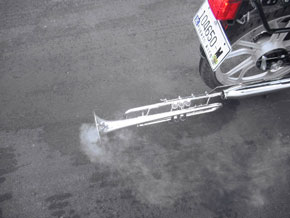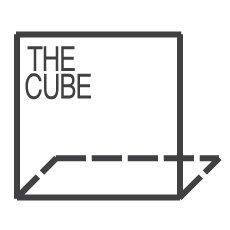
Allora & Calzadilla
Jennifer Allora (b. 1974, Philadelphia, PA) and Guillermo Calzadilla (b. 1971, Havana, Cuba) are known for their complex artistic practice encompassing sculpture, video, photography and performance. Simultaneously critical and playful, their conceptual works are both thought provoking and politically incisive. The artists live and work in San Juan, Puerto Rico. Allora & Calzadilla have had various monographic exhibitions worldwide including at the Serpentine Gallery, Renaissance Society, Kunsthalle Zurich, Stedelijk Museum Amsterdam, Haus Der Kunst, Kunstmuseum Krefeld, and National Museum, Oslo. They have presented their work in numerous collective international exhibitions including at the Musee D’Art Moderne de La Ville De Paris/Arc, the Centre Pompidou in Paris and Tate Modern among others, and have taken part in numerous biennials including in Venice, São Paulo, Whitney, Lyon, and Istanbul Biennials.
Under Discussion
Under Discussion is part of the series of site-specific projects informed by the working concept Land Mark, which unsettles the formal and ecological premises of “Land Art” by posing the following questions: In whose interest is land marked, and to what ends? Which marks are deemed worthy of preservation, and which are subject to obliteration?
These questions were formulated in response to the “transitional geography” of the Puerto Rican island of Vieques, which for sixty years was used as a training ground for the U.S. Navy, leaving its landscape scarred with bomb-craters and its ecosystem severely contaminated. In 2003, a civil disobedience campaign was successful in forcing the military out, but the land has been designated as a Federal wildlife refuge, a zone of natural processes in need of protection from humans after years of violent bombardment. But this designation entails its own violence, marginalizing the demands of island residents that it be fully decontaminated and turned over to municipal management, so that its future can be democratically debated.
This conflict is the point of departure for Under Discussion. An overturned conference table has been retrofitted with an engine and rudder grafted from a small fishing boat. This hybrid vessel functions as something other than a means of transportation or labor; it questions the principle of functionality itself, especially when making things work becomes the end all and be all of politics. The table is a common architectural trope used in liberal thought for symmetrical communication and the non-violent resolution of conflict. Yet it often fails to account for the inequalities that structure spaces of negotiation to begin with—such as the dominant definition of poor people as a threat to the environment rather than citizens with their own forms of ecological knowledge.
Under Discussion is an experimental device for the transmission of such knowledge, not only as a matter of information but as a testimonial rights-claim for environmental justice that interrupts the space of politics itself. In the video, a local activist uses the motorized table to lead viewers on a kind of situationist eco-tour around the restricted area of the island, re-marking the antagonisms that haunt the picturesque costal landscape and bearing witness to the memory of the Fisherman’s Movement, which initiated the first acts of civil disobedience in response to the ecological fall-out of the bombing.
Returning a Sound
Returning a Sound, 2003, was made in Vieques, Puerto Rico, an island used for the past 60 years by the U.S Military and NATO forces to practice military bombing exercises. To name just a few of the military interventions that were prepared for in Vieques: Vietnam, Korea, The Bay of Pigs, The Balkans, Somalia, Haiti, The Persian Gulf, Afghanistan, and Iraq. The local civil disobedience movement along with an international network of support led in May of 2002 to the stopping of the bombing, the removal of the US Military forces from the island and the beginning of the process of demilitarization, decontamination, and future development.
Returning a Sound acknowledges the achievement of the peace and justice campaign, while at the same time, points to the new stakes. The video addresses not only the landscape of Vieques, but also its soundscape, which for residents of the island remains marked by the memory of the sonic violence of the bombing. It follows Homar, a civil-disobedient and activist, as he traverses the demilitarized island on a moped that has a trumpet welded to the muffler. The noise-reducing device is diverted from its original purpose and instead produces a resounding call to attention. It becomes a counter-instrument whose emissions follow not from a preconcieved score, but from the jolts of the road and the discontinuous acceleration of the bike’s engine as Homar acoustically reterritorializes areas of the island formerly exposed to ear-splitting detonations.
The atonality of the trumpet’s call—it variously evokes the siren of an ambulence, Luigi Russolo’s Futurist Intonarumori and even experimental salsa or jazz–puts it at odds with the musical convention we might typically expect to mark a popular victory and an affinity with a “land,” namely an anthem. Interested in the idea of an anthem, as a commemorative structure, but not satisfied with the conservative connotations of the word, the artists preferred the more open set of associations that the Greek etymology of the word offered, anti-phonos (‘sounding in answer’), a composite of anti- (in return) and phonos (voice). The title of the work excavates the etymological origins of the word in order to unsettle it from within. The anthem thus entails a kind of answerability to a sonic event that preceeds the one who answers. This primitive definiton marks a potential dissonance in a genre associated with the harmonious “voice of the people,” a figure normally tied to the prinicple of territorial co-belonging. Yet in Vieques, the future of the reclaimed land remains uncertain and is largely insulated from democratic claims—Returning a Sound at once celebrates a victory and registers its precariousness, calling for an unheard-of vigilance.


